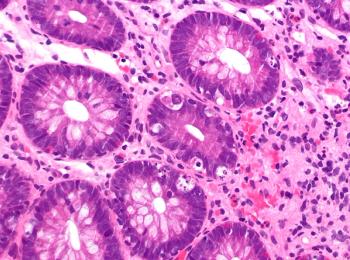
Engineered Tumor-Specific T Cells May Help Relapsed Hodgkin Lymphoma Patients
A recent study found that Hodgkin lymphoma patients with active disease achieved clinical responses with tumor-specific T cells that were genetically modified to be rendered resistant to transforming growth factor beta, a cytokine expressed by most human cancers.
It may be possible to treat patients with relapsed Hodgkin lymphoma (HL) with a new engineered T-cell approach that is less toxic and does not require pretreatment chemotherapy. Researchers at Children's National Health System are reporting in a study
Lead author Catherine Bollard, MD, the director of the Children’s Research Institute’s Center for Cancer & Immunology Research at Children’s National Health System in Washington, DC, said TGF-β is a cytokine ubiquitously expressed by most human cancers. This made it an important immune evasion strategy to overcome with a T-cell therapeutic approach. She and her colleagues had previously shown in vitro and in murine models that this approach was safe and effective.
“The study is remarkable for the fact that four of seven patients with relapsed refractory HL had objective clinical responses, including durable complete responses of more than 4 years. In addition, unlike other gene-engineering strategies, there were no toxicities greater than grade 3 observed related to this therapy,” Dr. Bollard told Cancer Network.
In the dose-escalation study, eight patients with Epstein-Barr virus–positive HL received two to 12 doses of between 2 × 107 and 1.5 × 108 cells/m2 of specially engineered T cells. Production of TGF-βin the immediate vicinity of tumors blunts tumor-directed therapies. So, the researchers forced expression of a dominant-negative TGF-β receptor type 2 (DNRII) onto LMP-specific T cells (DNRII-LSTs) that were specially designed to seek out and destroy proteins derived from the Epstein-Barr virus expressed by the tumor cells.
The DNRII expressed by the T cells allowed the cells to resist the hostile tumor environment and kill the tumor cells without lymphodepleting chemotherapy before infusion. Seven of the eight patients treated had active disease at the time of T-cell infusion. After infusion, the signal from the genetically modified T cells in the peripheral blood increased up to 100-fold and the DNRII-LSTs persisted for up to 4 years, according to the authors.
The researchers write that expression of DNRII also may be useful for other tumors that exploit this immune evasion mechanism, including melanoma and lung cancer. “We are now exploring this approach for other human cancers known to use TGF-β secretion as a potent immune-evasion strategy,” said Dr. Bollard.
Newsletter
Stay up to date on recent advances in the multidisciplinary approach to cancer.















































































